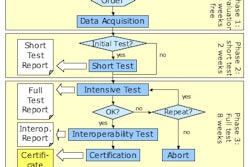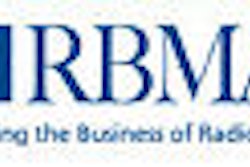To the uninitiated radiology administrator, it's a nightmare -- the audit team is on its way. It wants a wide range of documentation in a seemingly wild search for underlying billing evils. More compliance officers are asking radiology administrators to wake up to the benefits of regular audits and conduct self-audits to head off problems.
What's an audit, anyway?
Audits are an opportunity to examine the accuracy of your records and accounts. Auditors gather and evaluate evidence to establish connections among particular beliefs and the actual information. Then they create reports to communicate the results to anyone interested (managers, board members, and so on).
There are three types of auditors: internal, external (those that are contracted by your facility), and governmental.
"You don't want governmental (auditors). They don't have a clear goal. They come in and look at everything," said Andrei Costantino, director of organizational integrity at Trinity Health in Novi, MI. He spoke during the 2006 American Healthcare Radiology Administrators (AHRA) annual meeting in Las Vegas.
Why audit?
Auditors generally look for various problems, from billing and coding mistakes to incorrect charts. The U.S. Congress and the Department of Justice continue to watch hospital management. The more prepared your facility is prior to an unannounced governmental audit, the better, Costantino said.
"The government constantly looks at what we've done," he said. "You've got to keep moving forward, but you can't stop worrying about the past either."
How to conduct an audit
1. Plan and organize. Define your objective and purpose. This can be tricky, because you don't want your scope to be too broad or too narrow, Costantino said.
"You may think that there might be a problem in a certain area -- start there," he said.
Pick an initial concern, such as one of the following examples offered by Costantino:
- Coding errors
- Denial issues
- Documentation problems
- Compliance concerns
A clearly defined objective influences not only the audit process, but also the outcome. The purpose that you define inherently skews the investigation and the resulting action points or decisions.
2. Outline the sample collection. Now you will need to determine what kinds of data are best suited to answer your initial question or concern, according to Costantino.
For example, perhaps you believe that a problem exists with the billing information on the UB-92 form. Take a look at the form and the information required to fill it out. Such data include the following:
- Revenue codes
- Units billed
- HCPCS codes
- Dollar amounts
- ICD-9 codes
- Modifiers
- Condition codes
- Date of service
"There are so many opportunities for a claims denial here," he said. "The chances to audit appropriately and improve fiscal outcomes can be great."
Sample these forms over time and analyze the resulting data. Experts often recommend asking someone in the office to review 10 claims per week and look for a certain problem.
"Now you have a concise window of information to work with," Costantino said.
Keep your audit topics and data collection sets consistent year after year to help to eliminate bias and develop data continuity, he said. Of course, consistency makes your job easier, too. The next time around, you'll just have to input data, not reinvent the wheel.
3. Create a schedule. Identify the other departments or people with whom you want to partner. Then talk to them.
Tell them what information you need, and why you need it. Help them to understand how the audit will improve the overall effectiveness of the facility and the bottom line. Create regular, reasonable deadlines so they'll be able to comply.
Don't ask them to get the data to you as soon as possible -- that's a recipe for disaster. But you don't want to set a completion date so far away that your co-workers forget all about the audit. Established time lines create achievable goals, Costantino said.
Don't be afraid of audits, he added. The paperwork nightmare may just end up fulfilling your facility's fiscal dreams by uncovering unknown areas of error.
"More often than not, audits do not uncover fraud," Costantino said. "They discover billing errors. Of course there are bad players out there, but mostly people do their jobs to the best of their abilities. Mistakes are due to misunderstandings, lack of knowledge, technological breakdowns, and bad advice."
Through audits, you can find these problems -- and you can fix them.
Auditing for radiology administrators: A sample audit checklist
- How big a problem is _______ (your audit topic)?
- Have there been any major lawsuits or settlements lately related to problems/issues in your department?
- What are the common pitfalls that lead to this problem?
- What laws come into play?
- What documents or resources will you need to examine this issue in your facility?
- What policies and procedures affect this problem?
- Do your policies need to be updated?
- Does staff understand the related policies and procedures?
- Which departments and staff will you need to work with?
By Melissa Varnavas
AuntMinnie.com contributing writer
January 31, 2007
This article originally appeared in the "Radiology Administrator's Compliance & Reimbursement Insider," a monthly newsletter published by HC Pro that is designed specifically for radiology administrators. For a free trial subscription, please click here.
Related Reading
DRA looming: Is your organization prepared? October 6, 2006
Documentation makes all the reimbursement difference, October 4, 2006
Increase image reimbursement with a designated coder, August 7, 2006
Prevent IR coding whirlwind with basics, July 26, 2006
The added value of ACR accreditation, June 13, 2006
Copyright © 2007 HC Pro



















